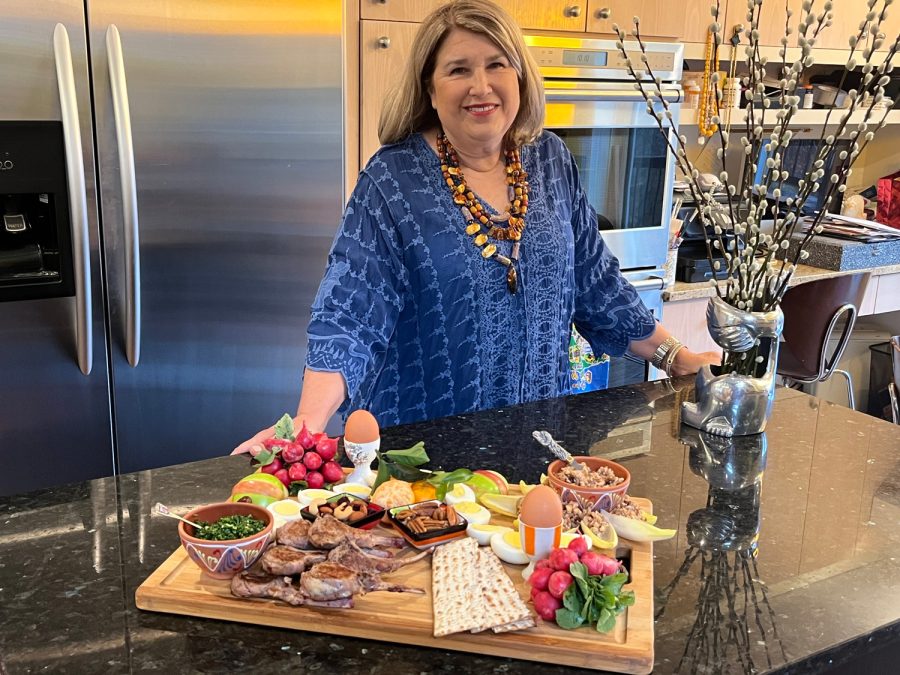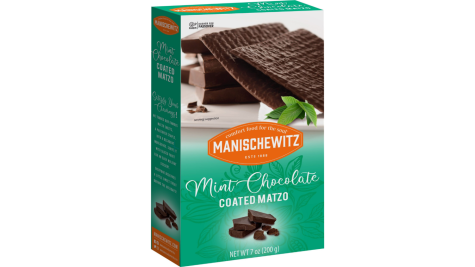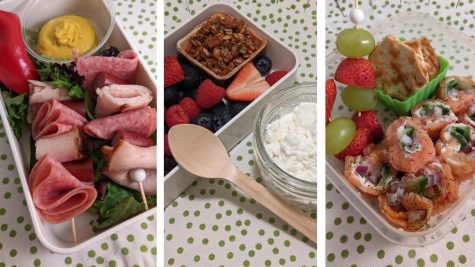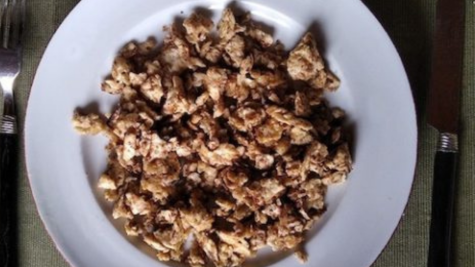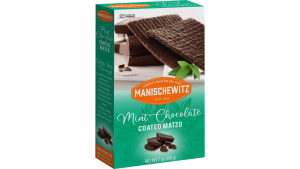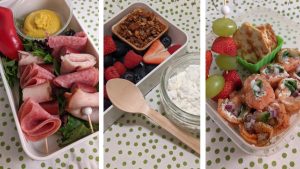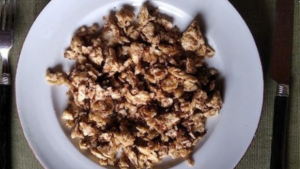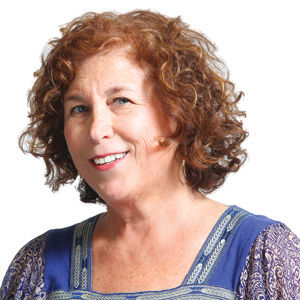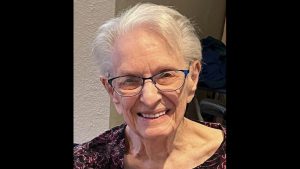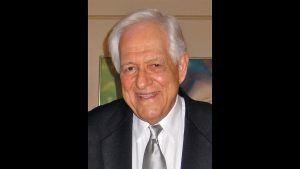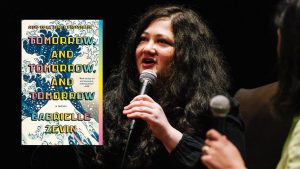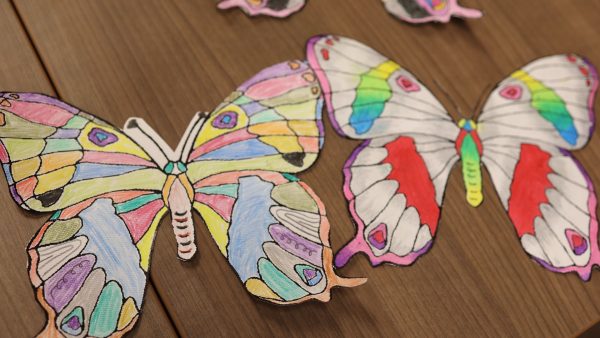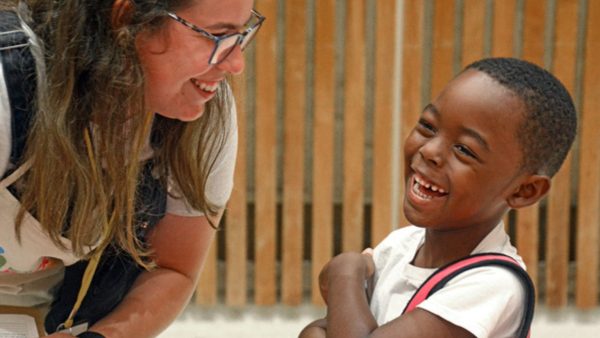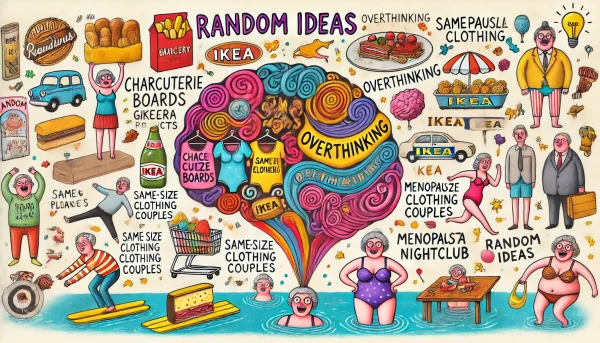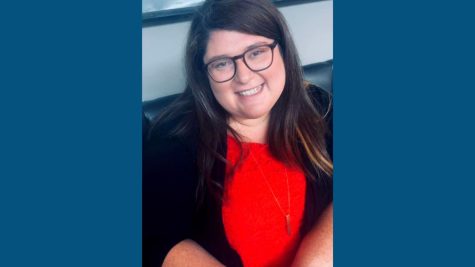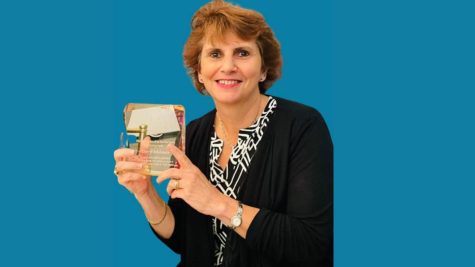From seder to sewing: St. Louis artist creates from what she collects
Published April 13, 2022
I wasn’t sure what to expect when I walked into Loren Ludmerer’s Ladue home on a recent Wednesday. Our meeting had been scheduled for 10 a.m. but that morning the rain was coming down hard.
At 7:59 a.m. I got an email from Ludmerer asking if we were still on. Given the bad weather, she wanted to confirm that I was coming over before she cooked the baby lamb chops.
Baby lamb chops? Did I read the email correctly?
Sure enough, when I arrived at 10, a half dozen or so baby lamb chops, hot from the oven, had been placed just so on a charcuterie board that artfully displayed bouquets of radishes, sliced hard boiled eggs, nuts, dates, trail mix, an orange, charoset tucked into endive and a bowl with a green mixture, which Ludmerer described as “salty, parsley chimichurri.”
“It’s a deconstructed seder plate,” said Ludmerer, 65, explaining how she took seder plate components and gave them a modern (and more appetizing) twist. The lamb chops, which were delicious by the way, stood in for the shank bone, while the chimichurri, perfect for dipping, represented the karpas.
“The Wall Street Journal had a front-page story on charcuterie plates being the next big thing,” she said. “While I’m reading it, my girlfriend texts me and asks, ‘Will you come for Passover?’ I took that as bam, a sign.”
A sign, in Ludmerer language, means a reason to create, not that she ever needs one. Her welcoming home, as well as her persona, reflect so much of her artistry, be it the fanciful quilts she sewed hanging on her walls, the ornate jewelry she wears pieced together from vintage and heirloom beads, or the Passover-inspired centerpiece she crafted using sandpaper (as a stand-in for the desert), miniature soldiers (representing the Egyptians), miniature Guatemalan worry dolls (Israelites) a red Power Ranger (Moses), matzah (from which she built pyramids), plastic vermin (the plagues) and the Red Sea, compliments of cherry Jell-O. There’s even a tiny plastic baby symbolizing the slaying of the first born.
Let me just say I am stealing this centerpiece idea for my family seder. That said, my talents are nowhere close to Ludmerer’s artistic capabilities, so the pilfering stops there.
As a child, Ludmerer liked to draw. From the age of 5, she planned her own parties and created invitations for them. Her Nana taught her to do needlework. Girl Scouts taught her how to use a sewing machine.
In high school in Milwaukee, where she grew up, she won the Betty Crocker Future Homemaker of Tomorrow Award and the Kraft State Hostess Award, among others.
“I embroidered my jeans, embellished my clothes and made jewelry — all very ’70s,” she said. “Those were the areas where my heart was, but not the way I would be able to support myself.
In 1974, Ludmerer entered Washington University as an architecture student because she saw the field as a way to combine her interest in art with math, in which she excelled, and be able to support herself. But she transferred to the business school after freshman year because “I had the temperament of an artist,” she said.
“If someone criticized my work, I was crushed. I was a very girly girl. I would have been chewed up and spit out in five minutes. I realized you can’t be like that.”
After receiving both her undergraduate degree and MBA in five years, she worked for several Fortune 500 companies, including 3M and Tonka toys.
“I did development work on Tonka GoBots, where I was paid to watch cartoons, assemble Star War sets and play trucks with preschoolers,” she said. “That was a great job.”
She returned to St. Louis in 1984 to work for Purina, where she invented Ghostbusters marshmallow cereal, marketed Chex Snack Mix and worked on various dog food accounts.
“During this time, I set elaborate tables for dinner parties with organically grown salads with edible flowers and wrote guests’ names in chocolate on dessert plates,” she added.
Ludmerer is married to Dr. Ken Ludmerer, the Mabel Dorn Reeder Distinguished Professor in the History of Medicine and professor of medicine at Washington University. In 1995, when the couple adopted their eldest of two daughters — now 27 and 25 — Loren left corporate marketing to be a stay-at-home mother. As she explained: “I was 40 and we worked so hard to have children. I didn’t want to turn over their care to someone else.”
A year or so later, she started making jewelry at home.
“This is made from three necklaces I bought at the (NCJW) Resale Shop and took apart. And my grandmother’s old beads,” she said, pointing to one of the several necklaces she was wearing. “I deconstruct, then reconstruct, sometimes incorporating new beads.”
Ludmerer had no intention of selling her jewelry, but friends and family decided otherwise.
“The jewelry business really grew by demand,” she said. “It was not a deliberate business decision for me, but my jewelry was very well received. In St. Louis, my jewelry was sold in Barucci Gallery and at the St. Louis Art Museum.”
She also volunteered at several local nonprofits including the Harvey Kornblum Jewish Food Pantry, Miriam Switching Post and the Resale Shop, where she saw many heirloom pieces being donated.
“I started collecting them, knowing I would do ‘something’ with them, sometime,” she said. “I can find a purpose for most everything.”
When the pandemic hit, she decided to sew masks.
“I ordered all this fabric online and spent three hours trying to make what amounted to an unwearable mask,” she said, laughing.
She gave much of the fabric to a neighbor proficient in mask making but kept some of the pieces. Pondering what to do with them, she created “COVID Pillow,” which she machine-quilted and embroidered with words and phrases such as “Zoom,” “social distancing,” “testing,” “PPE,” “antifa” and “WFH” (work from home).
One of her creations, a blue jeans quilt, features jeans belonging to her father, husband and soon-to-be son-in-law. The back side of the quilt boasts a hand-crocheted and embroidered afghan that Ludmerer’s Nana made decades ago. Family, home and nesting are prevalent themes in Ludmerer’s artwork.
“All the jean pieces have seams because where they come together, at the seam, it’s stronger. When families come together, they’re stronger,” she said. “Also, each (jean) pocket holds something different — a shell picked up at the beach in Florida, where we adopted the girls; a lucky penny; a quarter for shopping at Aldi’s. All of these things I happened to have, except the scroll from a mezuzah. I had to order that.”
Another, even larger quilt, highlights Ludmerer’s enchantment with birds, which live in nests and often mate for life. More than a dozen birds in various shapes and sizes are patched together from textiles purchased on a trip to Africa, and other colorful fabric she collected over the years. The finished quilt, displayed over the hearth in the dining room, looks cubist in nature.
“Making a quilt is a great way to express how I feel about my role in my family, my thoughts about making a home or nest, my thoughts about women in general and what they hold dear,” she said.
“It makes me sad that everyday women’s contributions aren’t valued more. I think that’s universal across cultures and that’s what fascinates me. I wonder how did things that are so similar appear in civilizations that are completely isolated from each other. Much of my work is influenced by cultural awareness and solidarity with universal gender identity.”



